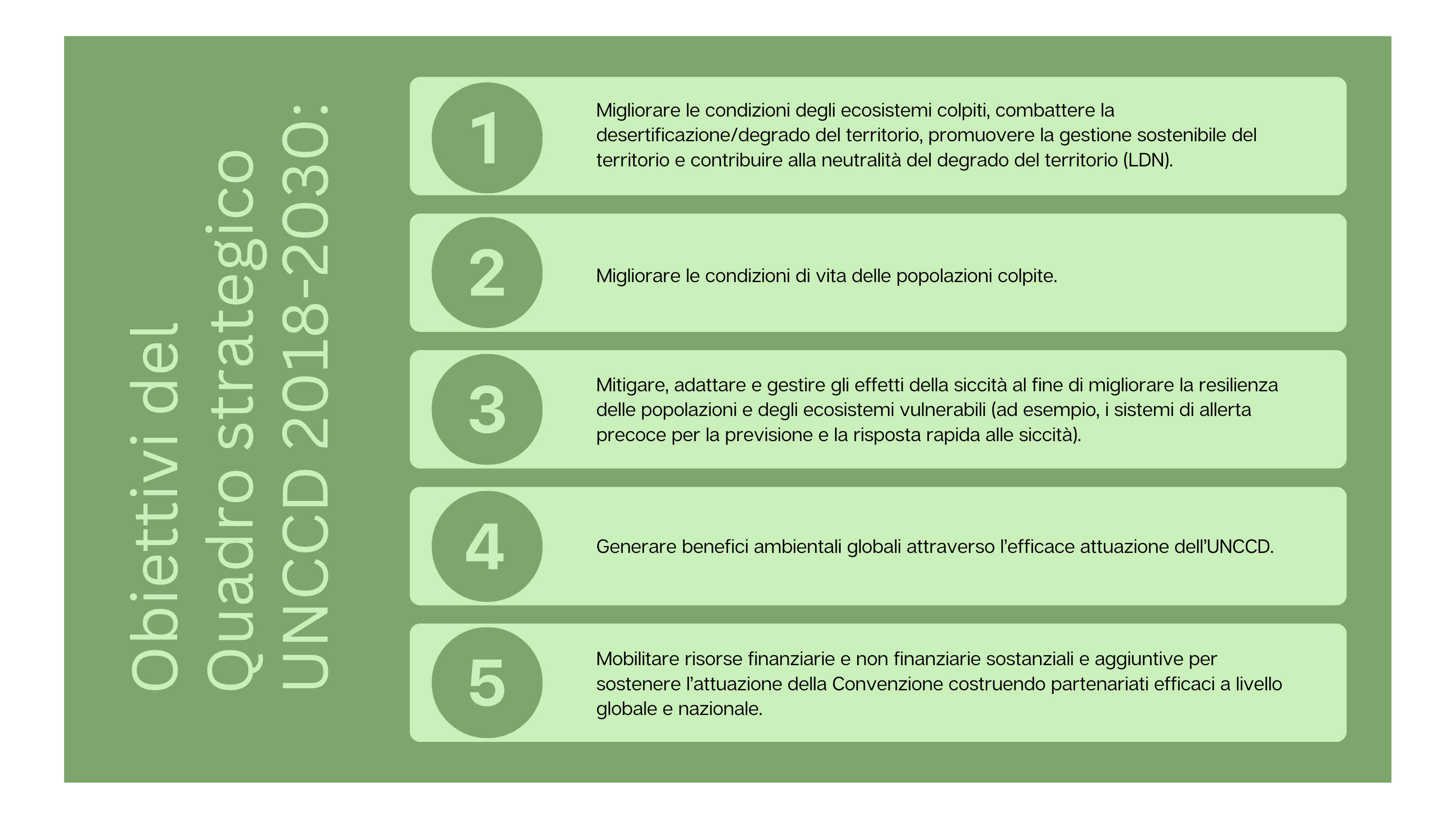The United Nations Convention to Combat Drought and Desertification – UNCCD – defines desertification as: ‘the degradation of land in arid, semi-arid and dry sub-humid areas resulting from various factors, including climatic variations and human activities’. These areas cover more than 40 per cent of the Earth’s surface and are home to about one third of the world’s population.
As with other international conventions, the Conference of the Parties (COP) is the supreme decision-making body. In December 2024, COP 16 will be held in Saudi Arabia.
As Subsidiary Bodies, the Committee on Science and Technology (CST) is a platform for scientific collaboration, while the Committee for the Review of the Implementation of the Convention (CRIC) periodically reviews the implementation of the commitments undertaken by ratifying the Convention.
The Convention moves according to multi-year strategies. Currently, the 2018-2030 Strategic Framework is in place with the operational horizon of avoiding, minimising and reversing desertification and/or land degradation and mitigating the effects of drought in affected areas, at all levels, and pushing to achieve Land Degradation Neutrality globally consistent with the goals of the 2030 Agenda.
Therefore, the five objectives of the UNCCD 2018-2030 Strategic Framework remain relevant for international cooperation activities within the context of the implementation of the Convention:

Italy ratified the Convention in 1997, both as a donor country and as a country affected by desertification. The fight against desertification and drought has always been an important theme for development cooperation in arid countries, ever since the first Italian law on development cooperation. Today, the issue of desertification and the further drying up of land – especially agricultural land – is extremely topical, particularly in Africa. The southern shores of the Mediterranean and Sub-Saharan Africa represent the frontier of Italy’s new development cooperation agenda.
Desertification is thus a multidimensional phenomenon and can be addressed by the socio-economic conditions of local populations in terms of economic sustainability of natural resources (agricultural and forestry) or in terms of water and land availability. Or even as a factor of involuntary emigration, as a driving agent of human mobility due to the “reduction or loss, in arid, semi-arid and dry sub-humid areas, of the biological or economic productivity and complexity of rainfed cropland, irrigated cropland, or range, pasture, forest and woodlands resulting from land uses […]” (United Nations Convention to Combat Desertification – UNCCD Art 1.f).